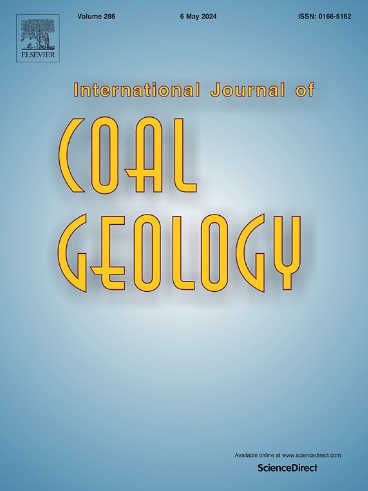Noble gases in Paleozoic shale fluids document tectonic events and fluid migration in the Upper Yangtze Block
IF 5.6
2区 工程技术
Q2 ENERGY & FUELS
引用次数: 0
Abstract
Major and noble gases of natural gas extracted from the low-permeability Paleozoic Wufeng-Longmaxi shale were measured to reconstruct the multi-stage, spatially varying tectonic evolution of the Upper Yangtze Block, China, one of the oldest parts of the Earth continents. The high gas dryness ratio [C1/(C2 + C3)] and high carbon isotopic ratios (δ13C-C1, δ13C-C2, δ13C-CO2) suggest a late mature thermogenic origin of shale gas. The highly fractionated atmospheric 20Ne/36Ar and 84Kr/36Ar ratios in our gas samples suggest they result from solubility-based partitioning of noble gases between oil and water followed by gas-water partitioning. Calculated volume ratios of oil, water, and gas phases vary spatially and temporally. In particular, the western Yangtze Block shows a lower reconstructed oil/water ratio, suggesting oil leakage promoted by the Triassic exhumation of Paleozoic shale, while a low gas/water ratio in the central-eastern Yangtze Block suggests gas leakage promoted by basin-wide Jurassic fold-thrust faulting. The lowest C1/36Ar volume ratio around faults at the basin edges indicates extensive gas expulsion. Delineated radiogenic 4He in gas samples are several orders lower than calculated in-situ produced radiogenic 4He, likely suggesting widespread 4He loss. Spatially-varying 4He/nucleogenic 21Ne ratios in the shale indicated that 4He loss in the western Yangtze Block predated that in the central-eastern portion. Such He loss was also coupled with the Triassic exhumation and the Jurassic fold-thrust faulting episodes. In summary, noble gas in pore fluids extracted from low-permeability shale can preserve reliable records of tectonic events produced during upper crust evolution.
古生代页岩流体中的惰性气体记录了上扬子地块的构造事件和流体运移
通过对五峰—龙马溪低渗古生界页岩中天然气的主、稀有气体进行测量,重建了中国上扬子地块多阶段、空间变化的构造演化。高气干比[C1/(C2 + C3)]和高碳同位素比(δ13C-C1、δ13C-C2、δ13C-CO2)表明页岩气为晚成熟热成因。大气中20Ne/36Ar和84Kr/36Ar比值的高度分馏表明,它们是由基于溶解度的稀有气体在油和水之间的分配引起的,然后是气-水分配。计算得到的油、水、气相体积比随时间和空间的变化而变化。其中,扬子地块西部的重建油水比较低,表明三叠系古生代页岩的发掘促进了原油的泄漏,而扬子地块中东部的低气水比表明全盆地侏罗系褶皱逆冲断裂促进了天然气的泄漏。C1/36Ar体积比在盆地边缘断裂带附近最低,表明盆地有大量排气。天然气样品中圈定的放射性成因4He比原位计算的放射性成因4He低几个数量级,可能表明4He广泛损失。页岩4He/成核21Ne比值的空间变化表明,扬子地块西部的4He损失先于中东部。这种损失还与三叠纪的发掘和侏罗纪的褶皱逆冲断裂相结合。综上所述,从低渗透页岩中提取的孔隙流体中的稀有气体可以保存上地壳演化过程中产生的构造事件的可靠记录。
本文章由计算机程序翻译,如有差异,请以英文原文为准。
求助全文
约1分钟内获得全文
求助全文
来源期刊

International Journal of Coal Geology
工程技术-地球科学综合
CiteScore
11.00
自引率
14.30%
发文量
145
审稿时长
38 days
期刊介绍:
The International Journal of Coal Geology deals with fundamental and applied aspects of the geology and petrology of coal, oil/gas source rocks and shale gas resources. The journal aims to advance the exploration, exploitation and utilization of these resources, and to stimulate environmental awareness as well as advancement of engineering for effective resource management.
 求助内容:
求助内容: 应助结果提醒方式:
应助结果提醒方式:


